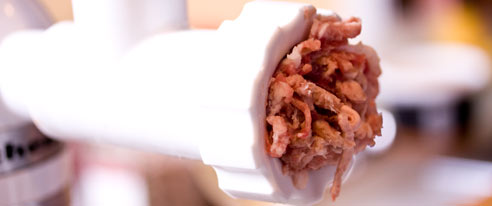LIPIDS: Fats & Oils
LIPIDS
q Fats and Oils belong to a group of compounds called lipids
q Contains larger proportions of carbon and hydrogen and smaller proportions of oxygen than carbohydrates
q More concentrated source of energy providing 2.25 times more energy than carbohydrates and proteins
q Lipids of importance for us are – fatty acids, fats, oils, sterols, phospholipids and lipoproteins
Classification
of Lipids
• Classified on the basis of structure
q Simple lipids- They constitute more than 98% of food and body fats. It is made up of 3 fatty acids attached to glycerol. They are triglycerides meaning more than 1 type of fatty acid is present in fat, e.g. Cooking oils and butter.
q Compound lipids- These are fats in which at least one fatty acid is replaced by carbohydrate, protein or phosphorus, i.e. They are fats + non-fat molecule, e.g. Phospholipids, glycolipids and lipoprotein.
q Derived lipids- They are breakdown products of fats and include diglycerides, monoglycerides, glycerol and fatty acids.
q Sterols- Not made with fatty acids and glycerol but have a benzene ring structure. These fat-like substances include cholesterol and fat soluble vitamins.
Fatty Acids
· Consist of chains of carbon atoms with a methyl group (CH3) group at one end and a carboxyl (COOH) group at the other end.
· May have short chains or long chains (12-22 carbon chains).
· May be saturated or unsaturated.
· Saturated fats have single bonds between carbon atoms.
· Unsaturated fats have one or more double bonds between carbon atoms.
· Polyunsaturated fats have two or more double bonds
Saturated Fatty Acids:
q Found in animal foods such as meat, butter,
cheese and egg yolk
q Found in plant foods such as coconut
oil, palm oil and cocoa butter
q Hydrogenated fats used in bakery have
high % of saturated fatty acids
q 10% of our total calories should be
from saturated fats
q Examples: Stearic acid, palmitic acid
etc.
Unsaturated Fatty Acids:
q Two types – MUFA and PUFA
q MUFA has one double bond and helps in
lowering blood cholesterol levels. Examples: Oleic acid
q PUFA has two or more double bonds and
helps in lowering blood cholesterol levels and prevent coronary heart disease.
Examples: Linoleic acid (2 double bonds), linolenic acids ( 3 double bonds),
arachidonic acid (4 double bonds)
Phospholipids, Lipoproteins
Glycolipids & Cholesterols
q Phospholipids: Composed of fats, phosphoric acid and
a nitrogenous base, e.g. Lecithins. Required for formation of brain and nervous
tissue and helps in transporting fats throughout body.
q Lipoproteins: Include cyclomicrons, VLDL, LDL and
HDL. Are composed of lipids and proteins in varying proportions.
q Glycolipids: They contain glucose or galactose in
place of one of the fatty acids in triglyceride molecule.
q Cholesterols: Fat-like substance present in food.
Normal blood cholesterol level is 200 mg/100 ml blood. Helps in formation of
bile and is an essential constituent of cell membranes.
Functions
of Fats
• Energy: A
concentrated source of energy. 1 gm = 9kcal, when oxidized in body. All tissues
except brain and central nervous system can utilize fat as a source of energy.
• Protein
sparing action: The kilocalories from fat spare dietary proteins from being
oxidized for energy.
• Thermal
insulation: Subcutaneous fat acts as an insulation and helps in
retaining body heat.
• Protection
of vital organs: It provides a protective padding to vital organs
from mechanical shock and keeps them in place.
• Absorption
of fat soluble vitamins: Necessary for fat soluble vitamins A, D, E and K.
• Essential
fatty acids: An adequate intake of fats/oils is necessary for linoleic
and linolenic acids.
• Satiety
value: Fat slows down the secretion of gastric juice and speed of
digestion.
• Synthesis
of cell membranes: For all cell membranes
• Synthesis
of hormones: Necessary for some hormones.
Deficiency
& Excess of fats
• Deficiency:
Causes deficiency of fatty acids, linoleic and linolenic acids; which are reqd. for
healthy cell membranes.
Leads to eczema and skin lesions;
and also deficiency of fat soluble vitamins, and also growth and weight in
children.
• Excess of
fats: Causes obesity and excess fat is stored in adipose tissue.
Leads to cardiovascular disease as well.
RDA of fats
•
Should
not contribute 30% of total kcalories.
•
Kcalories
from Saturated fat should not exceed 10% of total calories and at least 10%
calories should be provided by PUFA to ensure intake of all essential fatty
acids.
•
The
cholesterol intake should not exceed 200 mg/day.
•
Variety
of cooking oil to be used.






Comments
Post a Comment